SeaBus performs one of its many essential emergency exercises
SeaBus performs one of its many essential emergency exercises
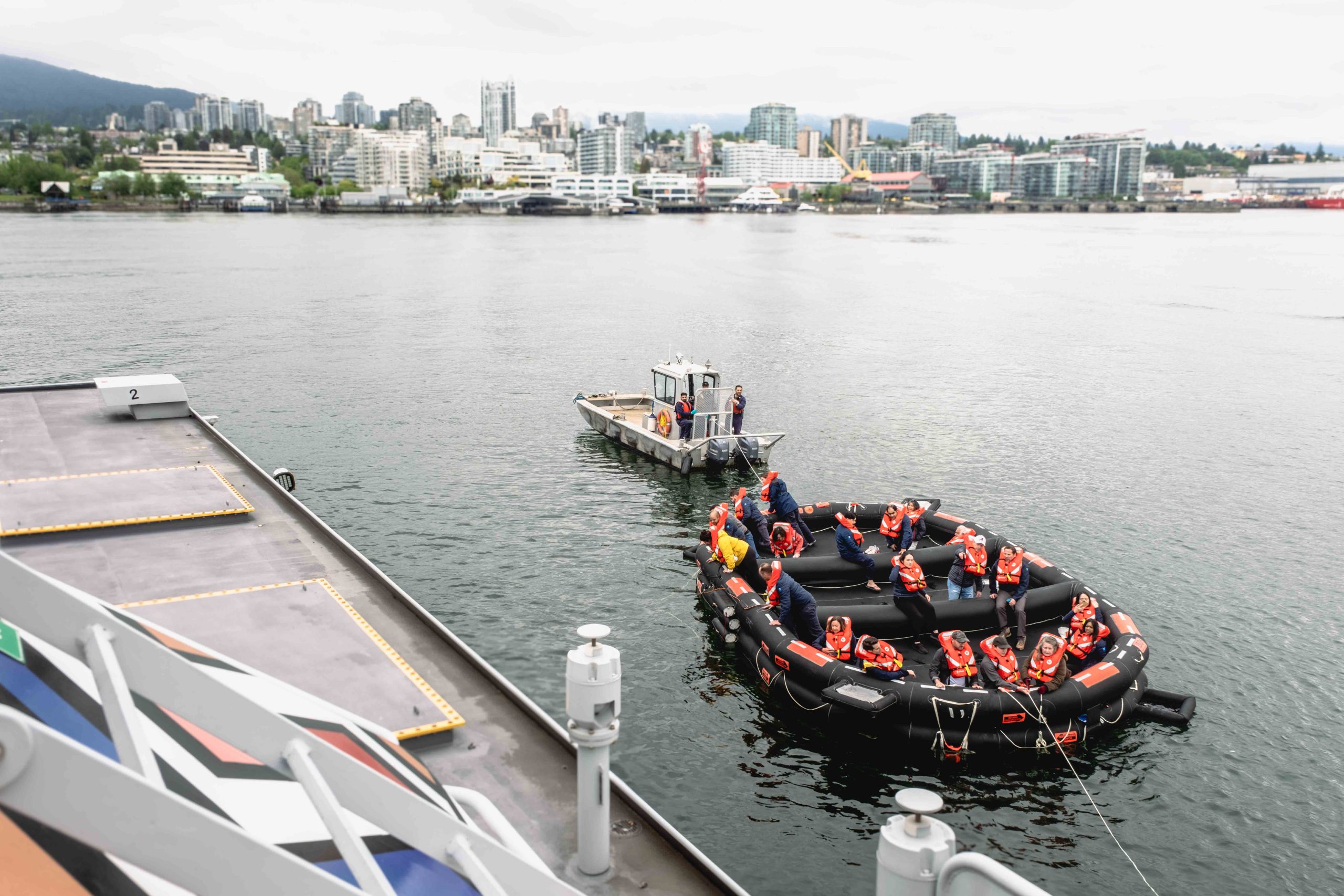
Safety is at the heart of everything we do. That’s why, throughout the year, SeaBus staff conducts various training drills and exercises to ensure readiness for emergencies.
Recently, staff at SeaBus conducted a life raft exercise where the crew practiced deploying a life raft, a self-inflating lifeboat, during a mock abandon ship scenario.
The SeaBus carries 385 passengers and has four life rafts. Each raft has room for 150 people, which means all passengers can fit onto three life rafts with the fourth serving as a spare.
Annually, the manufacturer tests the rafts to ensure they are insulated and intact. They also check the rafts for working equipment and perform a pressure test. Every six years, we deploy each life raft ourselves.
What happens during the SeaBus safety exercise?
This exercise allows staff to practice several procedures while deploying one of the life rafts on board the SeaBus.
First, we inform the Marine Communications and Traffic Services of the life raft deployment. Then, they transmit a safety broadcast on the radio to alert all vessels in Burrard Inlet. This is done to ensure that anyone nearby knows that this is in fact, just a drill!
Next, the vessel lets out a series of horns, seven short blasts followed by one long blast, to alert others on the water. This also the sign to the crew on board that it’s time to prepare for deployment of the life raft.
The mock passengers then put on life jackets, take off their shoes and eyeglasses and prepare for evacuation onto the life raft.
Once the captain gives the abandon ship command, the crew to deploys the life raft and helps passengers off the vessel.
A rescue boat then tows the life raft and evacuated passengers to shore.
With the exercise complete, a team of engineers returns the life raft to the SeaBus maintenance docks, near Lonsdale Quay, for reinstallation onto the vessel.
Lloyds Surveyor, responsible for inspecting the SeaBus on behalf of Transport Canada, was on board to ensure all safety-related elements were tested according to federal regulations. The marine industry is regulated by Transport Canada, and operators must meet their safety standards.
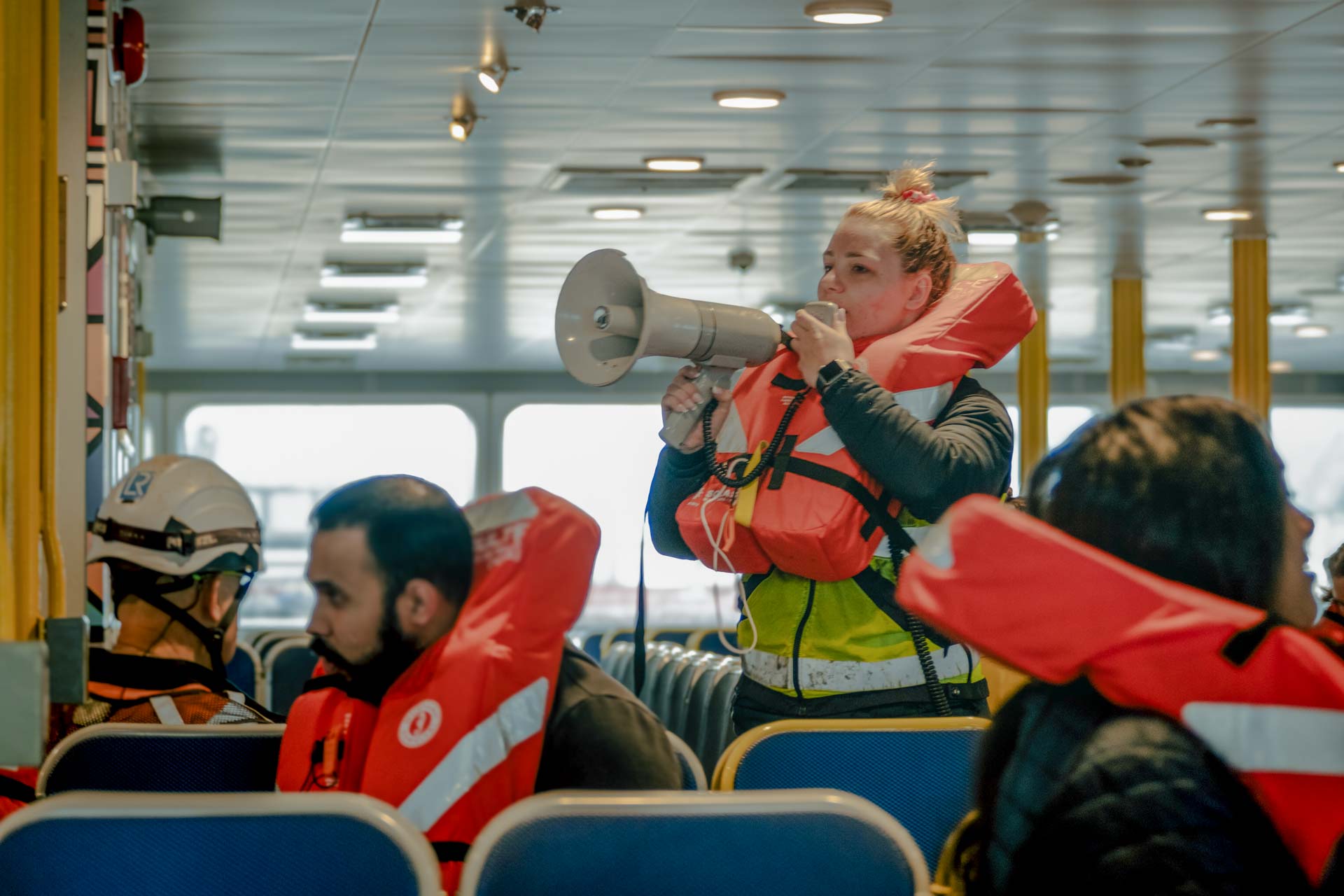
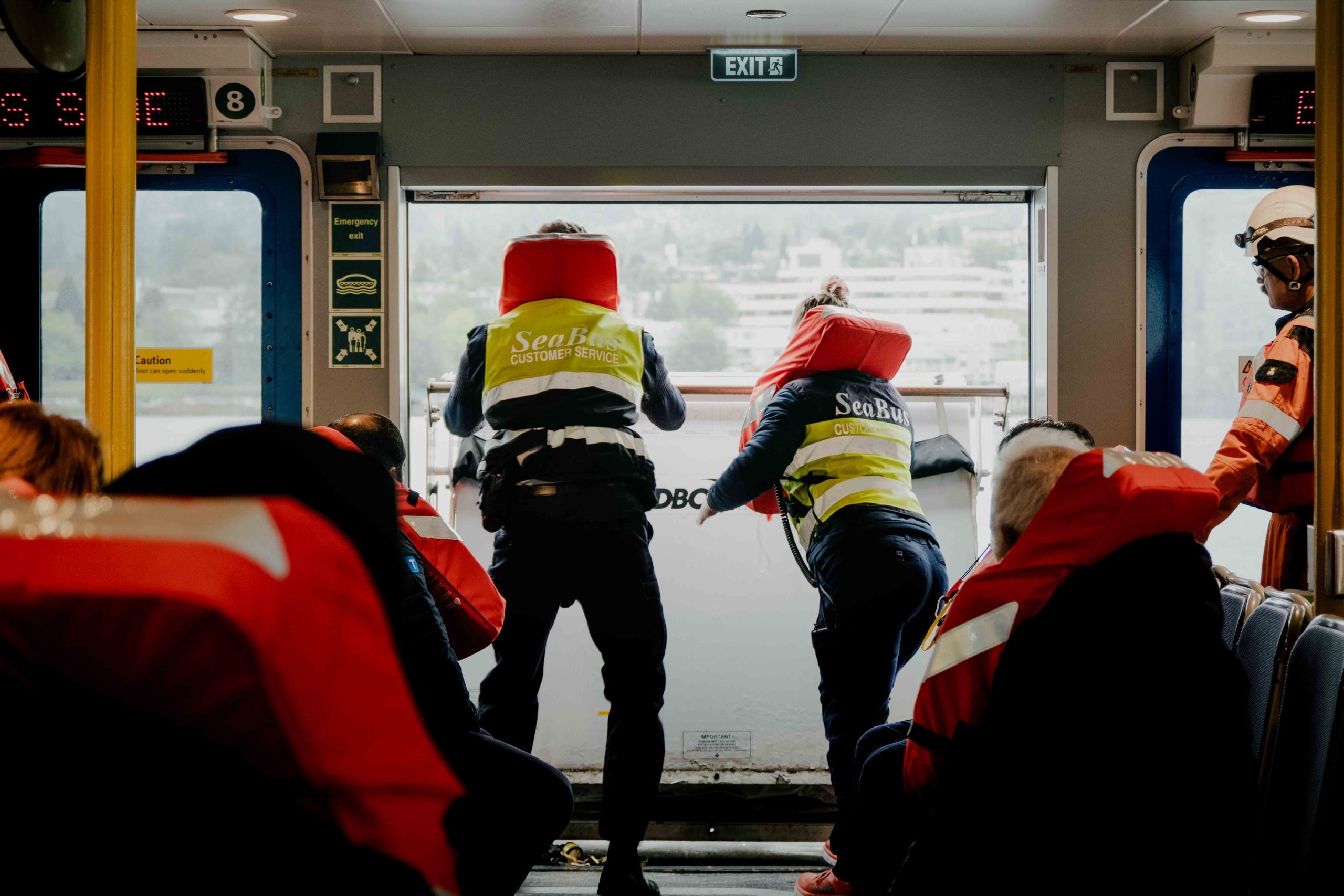
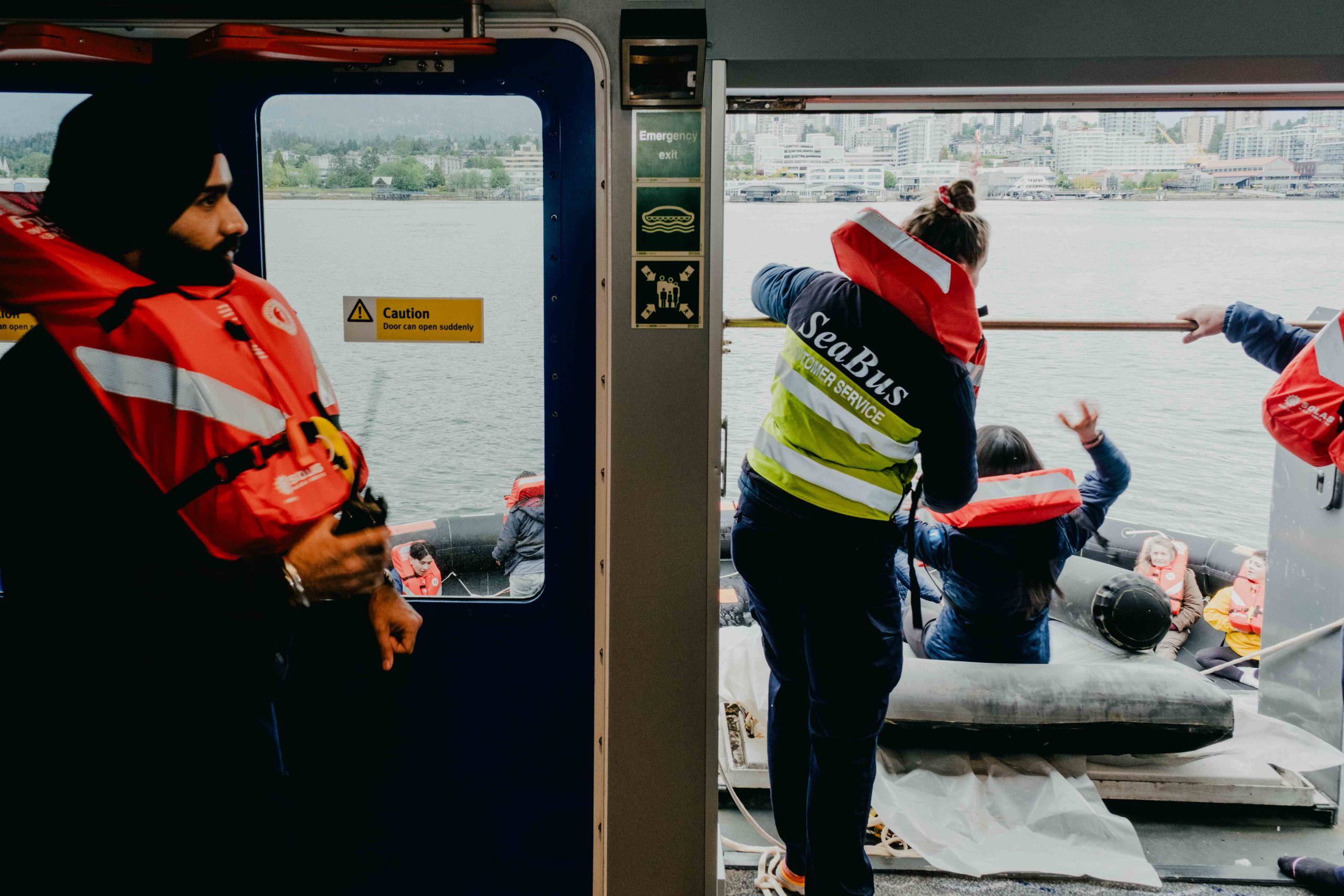
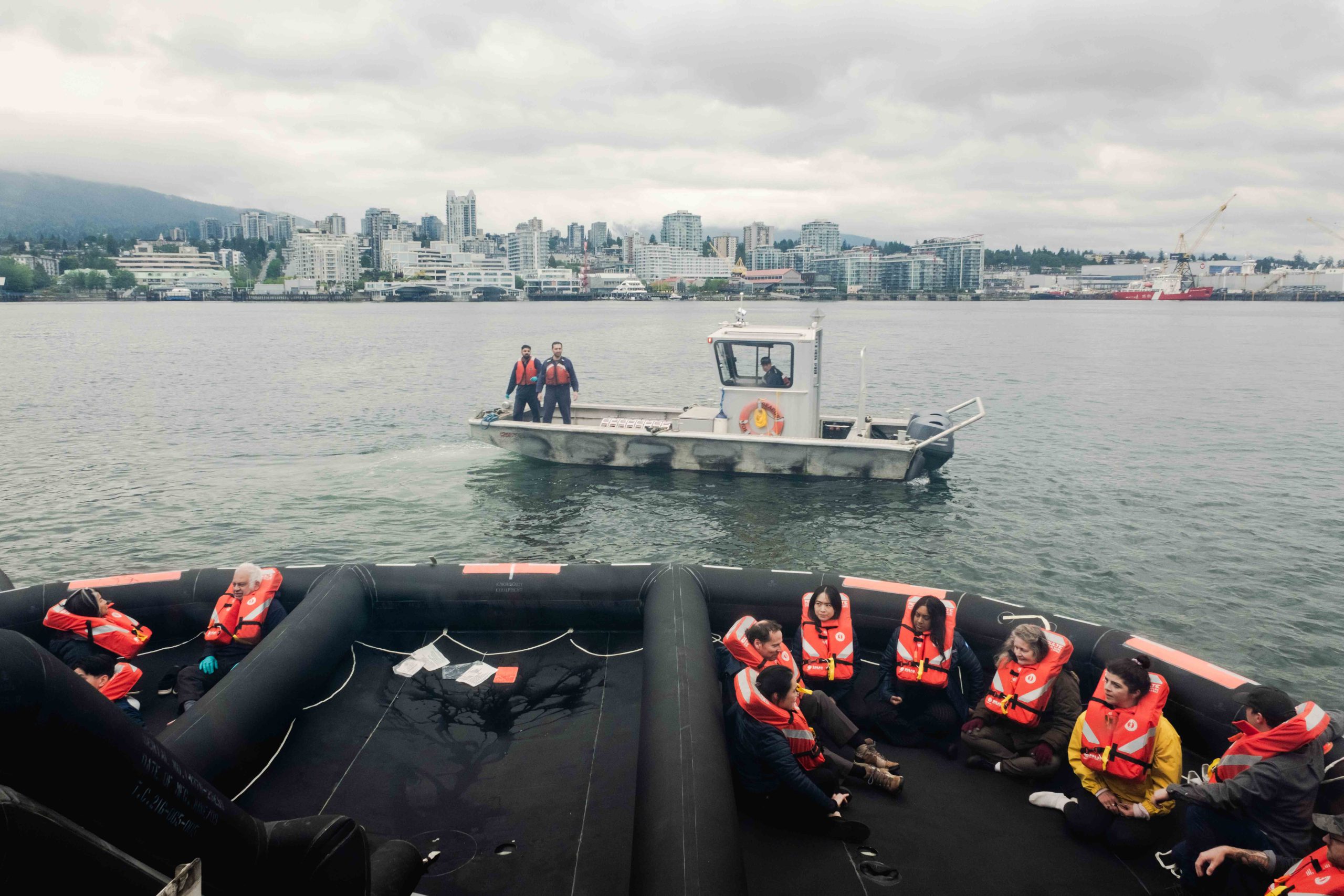
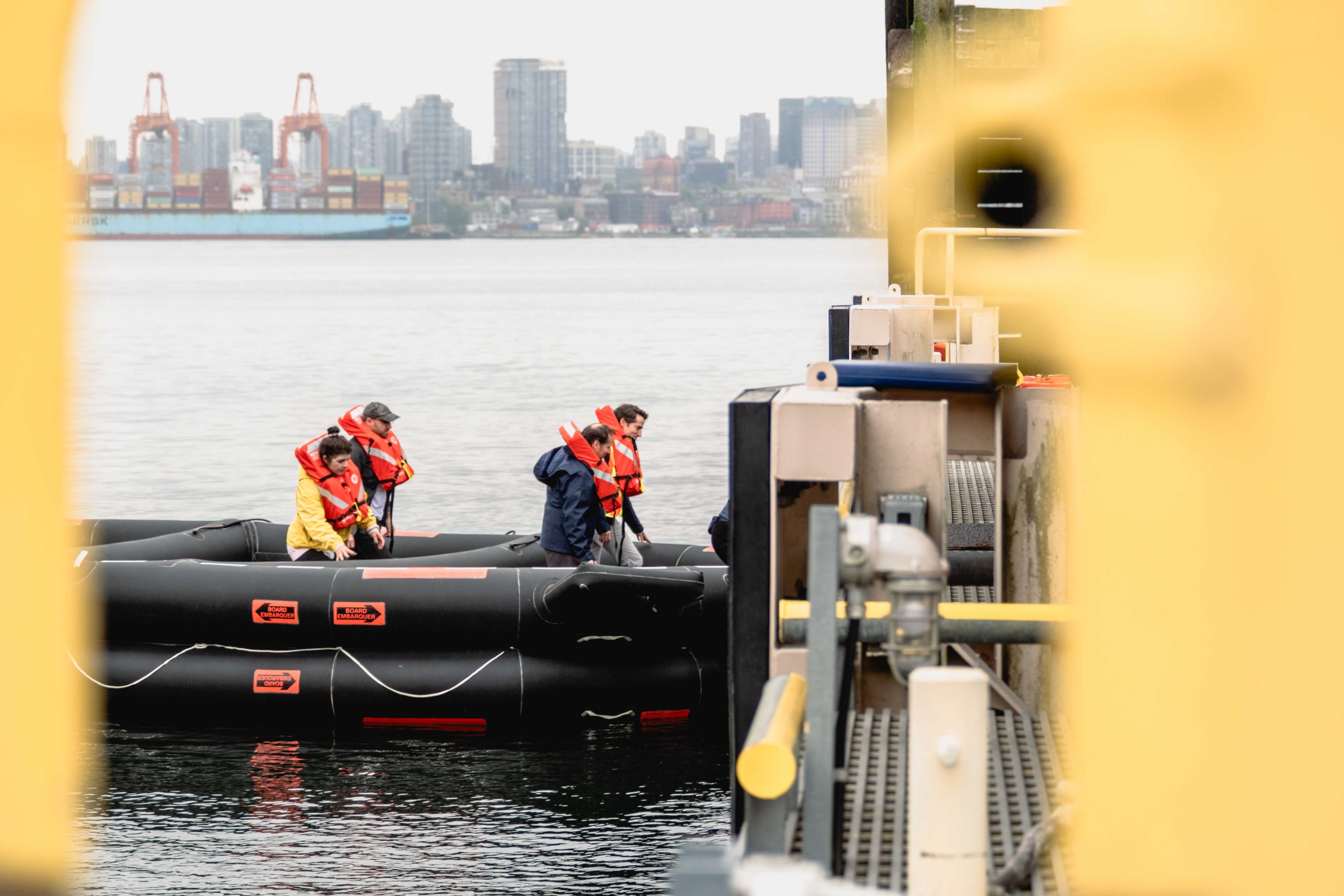
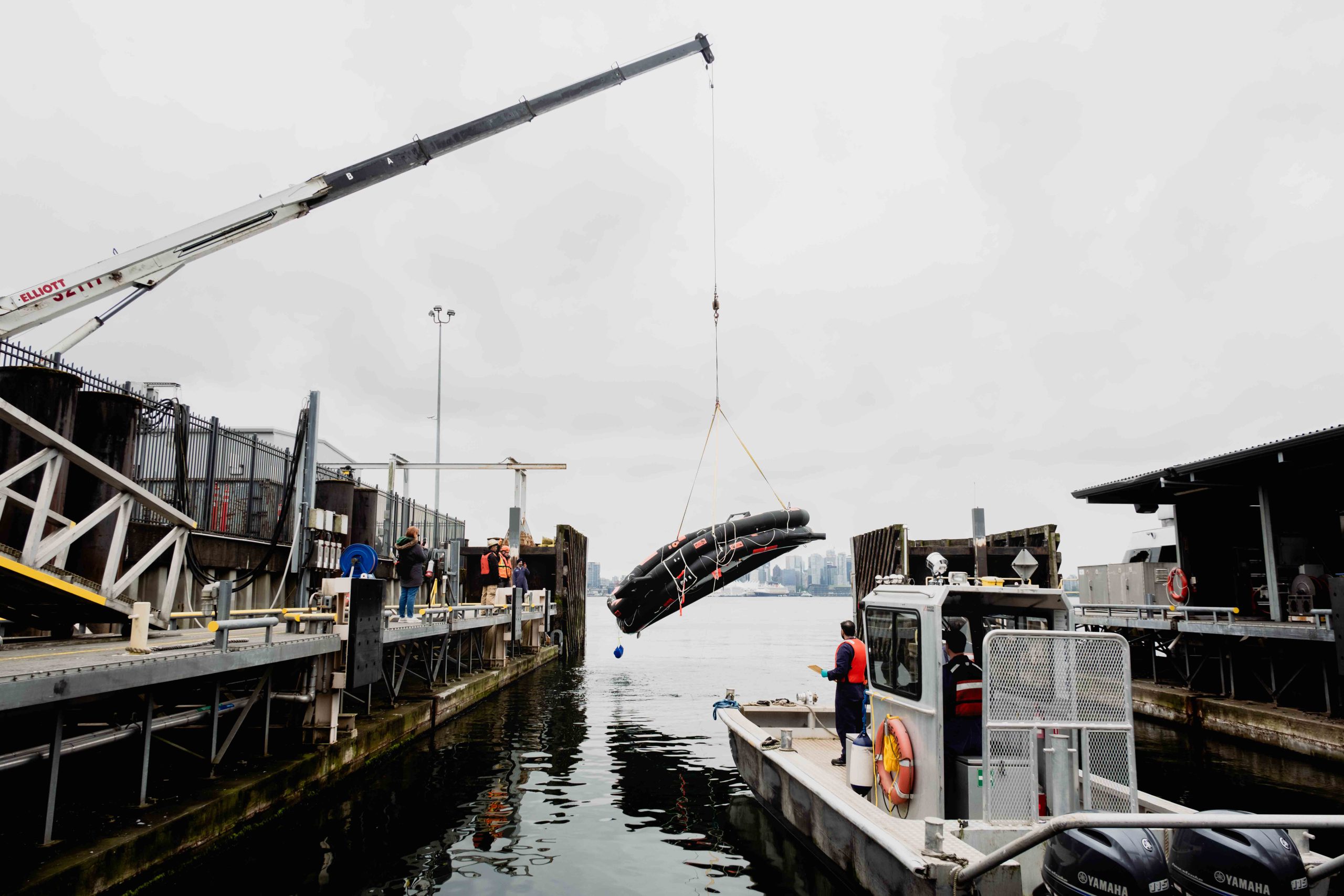
Why is this exercise performed?
This emergency preparedness exercise is one of many that SeaBus crew members complete every 15 days, covering different scenarios that could happen on board. It’s all part of our efforts to keep you safe and your commute as smooth sailing as possible.
If you see something, say something! Report any issues to a uniformed transit employee or by texting Metro Vancouver Transit Police at 87.77.77. Visit our Safety and Security page to learn more.





